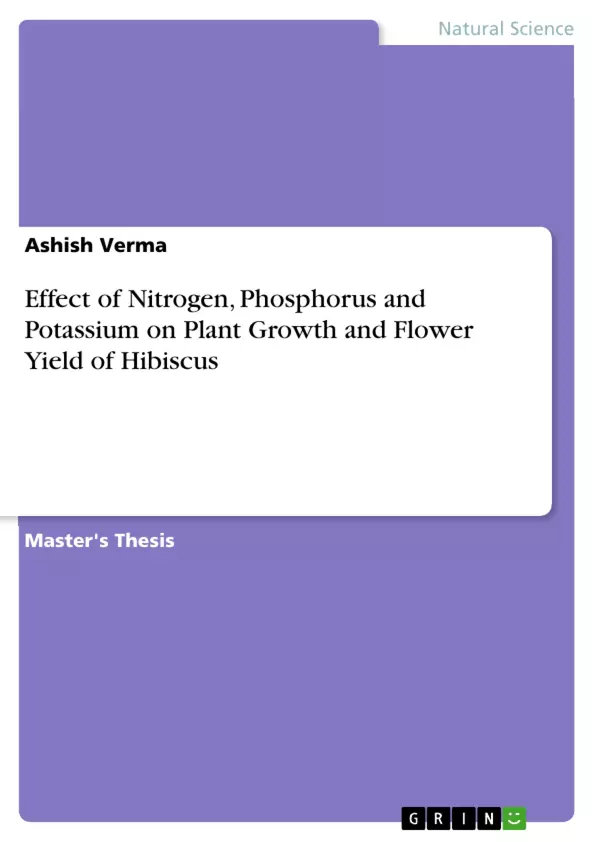The research work was conducted in the Horticulture Research Farm, Department of Horticulture, Sam Higginbottom University of Agriculture, Technology and Sciences, Prayagraj during the year 2019-2020. The experiment was conducted in randomized block design with three replication & 12 treatments. Treatments were allocated randomly to each replication, each treatment comprised of one plant, which made a total of 36 plants. The best results were achieved in treatment T4 NPK (100:105:105) gram per plant with maximum plant height (113.62), maximum number of leaves per plant (71.99), maximum number of branches per plant (10.07), minimum days to bud initiation (43.31 days), minimum days taken flowering (49.87 days), maximum number of flower per plant(15.83), maximum flower diameter (cm) (13.06), flower weight (g) was found maximum (3.82), number of flower was found maximum (39575) along with maximum cost benefit ratio (1:1.46).
Table of Contents
- INTRODUCTION
- REVIEW OF LITERATURE
- MATERIALS AND METHODS
- RESULTS AND DISCUSSION
- SUMMARY AND CONCLUSION
Objectives and Key Themes
This thesis aims to investigate the effect of nitrogen, phosphorus, and potassium on the growth and flower yield of Hibiscus rosa-sinensis. The study aims to optimize the application of these nutrients to improve plant growth and flower production.
- The impact of nitrogen, phosphorus, and potassium on plant height, leaf number, and branch number of Hibiscus rosa-sinensis.
- The influence of nutrient levels on flowering characteristics, including days to bud initiation, days to flowering, number of flowers per plant, flower diameter, and flower weight.
- The economic feasibility of different nutrient treatments for Hibiscus rosa-sinensis cultivation.
- Optimization of nutrient application for maximizing flower yield and profitability.
Chapter Summaries
- Introduction: This chapter provides an overview of the importance of Hibiscus rosa-sinensis as a horticultural crop and highlights the significance of nutrient management for its growth and yield.
- Review of Literature: This section compiles existing research on the role of nitrogen, phosphorus, and potassium in plant growth and development, with a focus on their impact on flowering characteristics in Hibiscus rosa-sinensis.
- Materials and Methods: This chapter details the experimental design, soil analysis, treatment application, and data collection methods used in the study.
- Results and Discussion: This chapter presents the findings of the experiment, analyzing the effects of different nutrient treatments on various growth and flowering parameters. It discusses the significance of the results and explores potential mechanisms underlying the observed effects.
Keywords
Hibiscus rosa-sinensis, nitrogen, phosphorus, potassium, plant growth, flower yield, nutrient management, horticulture, floriculture, fertilizer application, experimental design, statistical analysis.
- Quote paper
- Ashish Verma (Author), 2020, Effect of Nitrogen, Phosphorus and Potassium on Plant Growth and Flower Yield of Hibiscus, Munich, GRIN Verlag, https://www.grin.com/document/1453714



